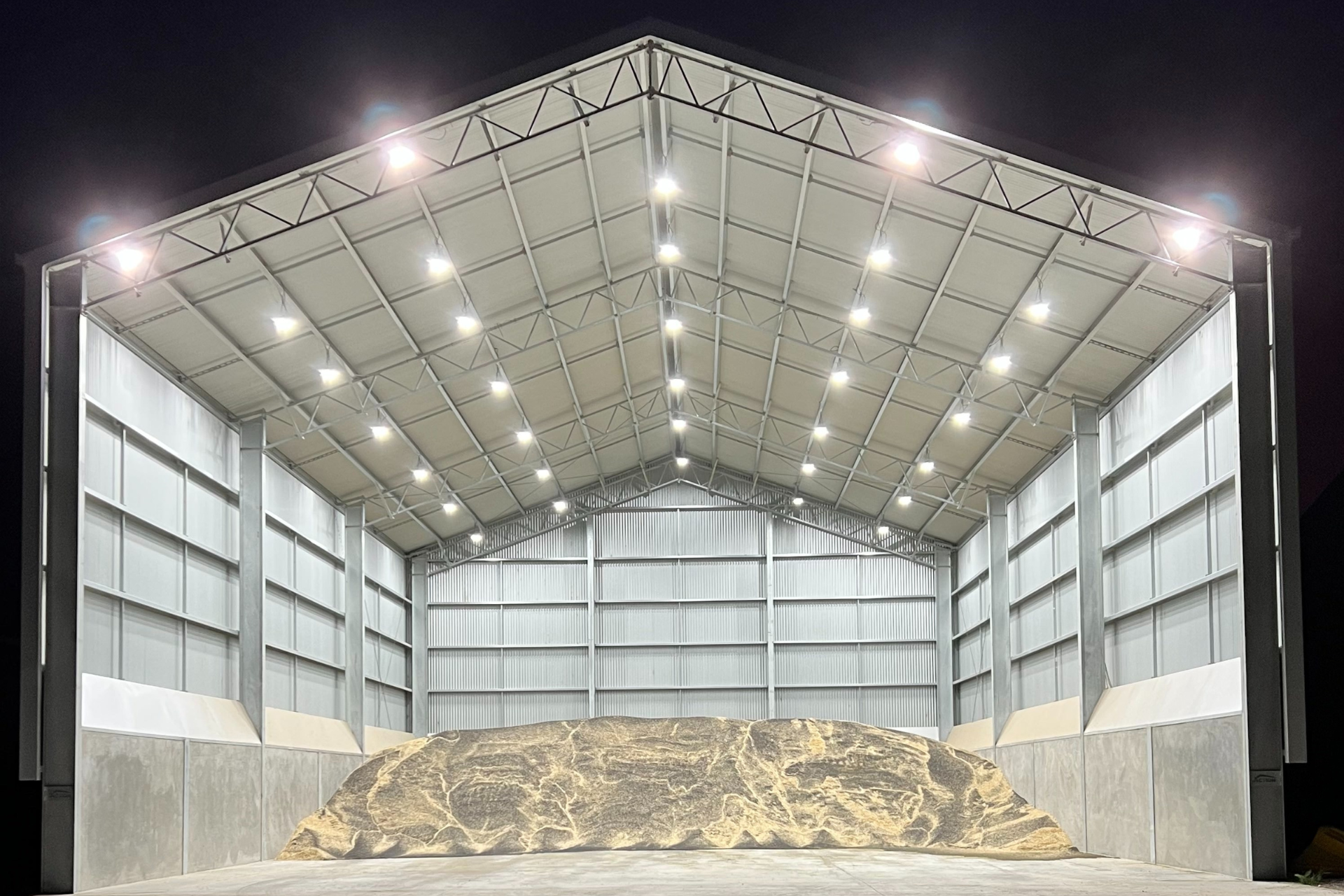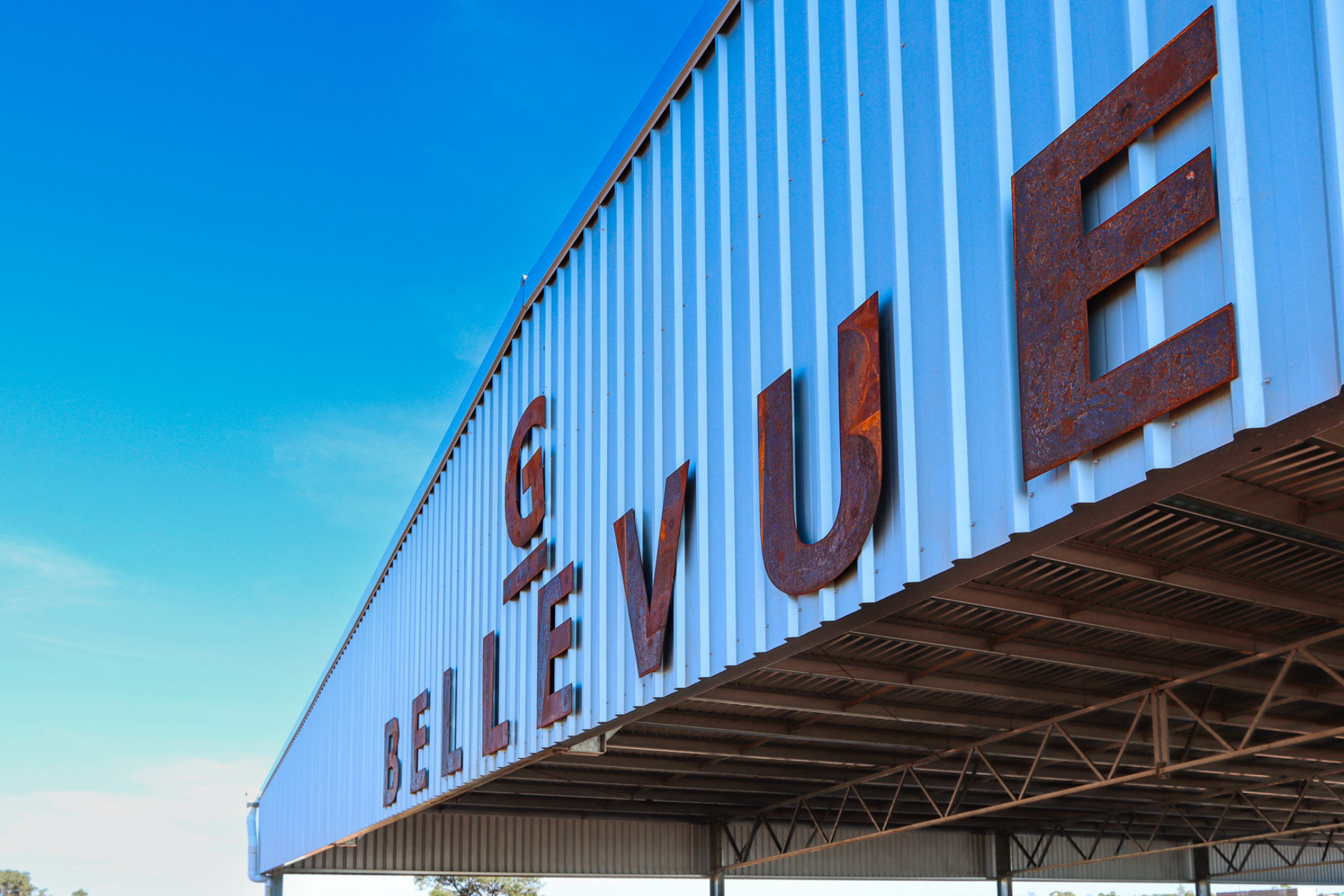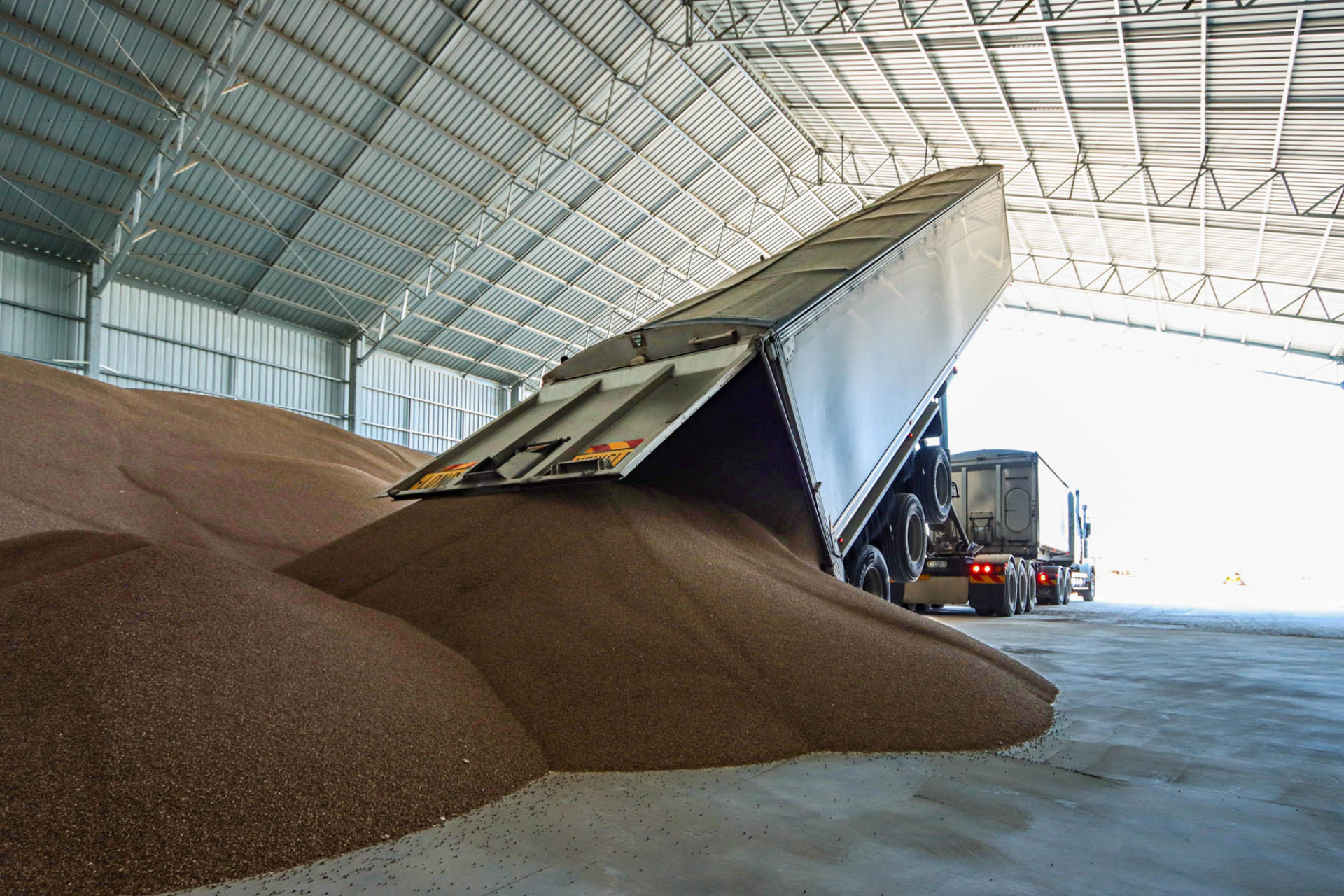Building a fertiliser shed?
Being able to store fertiliser in bulk on-farm has been advantageous in recent years with fluctuating fertiliser prices and shortages.
Bulk storage sheds have been a popular option for on-farm fertiliser storage as they are safe and effective, and they can be a versatile investment.
With fertiliser sheds becoming more common, we’ve decided to answer the top ten questions about building one.
How much do they cost? What is the best design? What size?
We answer these questions and more in this article.
1. How Much Does It Cost To Build A Fertiliser Shed?
If you are building a fertiliser shed, you are likely wondering how much it will cost.
The average cost of a fully enclosed fertiliser shed with concrete panels is approx. $180,000 – $220,000 including GST and erection.
The price of a fertiliser shed does vary from project to project. Below is a list of popular fertiliser shed sizes and a price guide for each.
Please note that prices include GST, erection and concrete panels and walls for the segregation of two products. For example, MAP and urea. Prices exclude the cost of a concrete floor slab.
- An 18m x 12m x 6m fully-enclosed fertiliser shed costs approx. $135,000 – $170,000. Stores approx. 400 tonne.
- A 24m x 12m x 6m fully-enclosed fertiliser shed costs approx. $155,000 – $190,000. Stores approx. 600 tonne.
- An 18m x 15m x 6m fully-enclosed fertiliser shed costs approx. $155,000 – $190,000. Stores approx. 600 tonne.
- A 19.5m x 18m x 6m fully-enclosed fertiliser shed costs approx. $160,000 – $210,000. Stores approx. 1,000 tonne.
- A 32m x 18m x 6m fully-enclosed fertiliser shed costs approx. $215,000 – $270,000. Stores approx. 1,200 tonne.
For a more in-depth discussion on fertiliser shed prices, read the price guide article – How Much Does It Cost To Build A Fertiliser Shed?
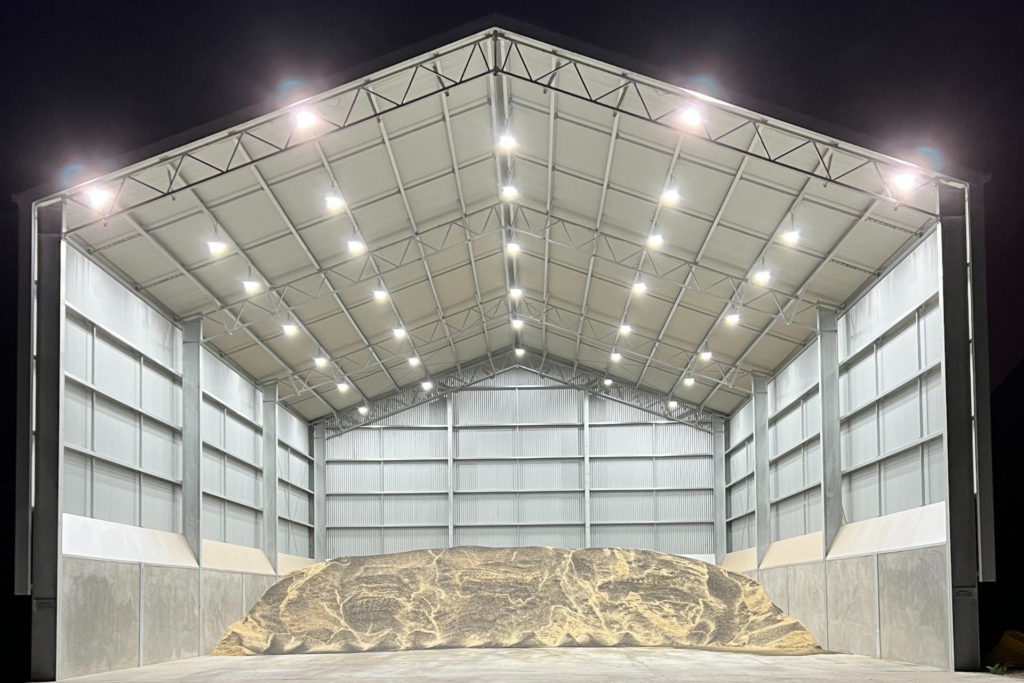
2. What Is The Best Way To Store Fertiliser?
Fertilisers should be stored in a cool, dry and well-ventilated area to prevent them from deteriorating or becoming unstable.
The best way to achieve this does depend on the type of fertiliser you are storing, however, an enclosed, lock-up fertiliser shed is considered to be best practice for on-farm storage.
Granular fertiliser can be stored in a shed with concrete panel walls (to protect the cladding from corrosion) and concrete panel walls for the segregation of different fertiliser types.
For smaller amounts of granular fertiliser, it may not be worth building a dedicated fertiliser storage shed.
Instead, one option is to include concrete panels in one or two bays of a machinery shed.
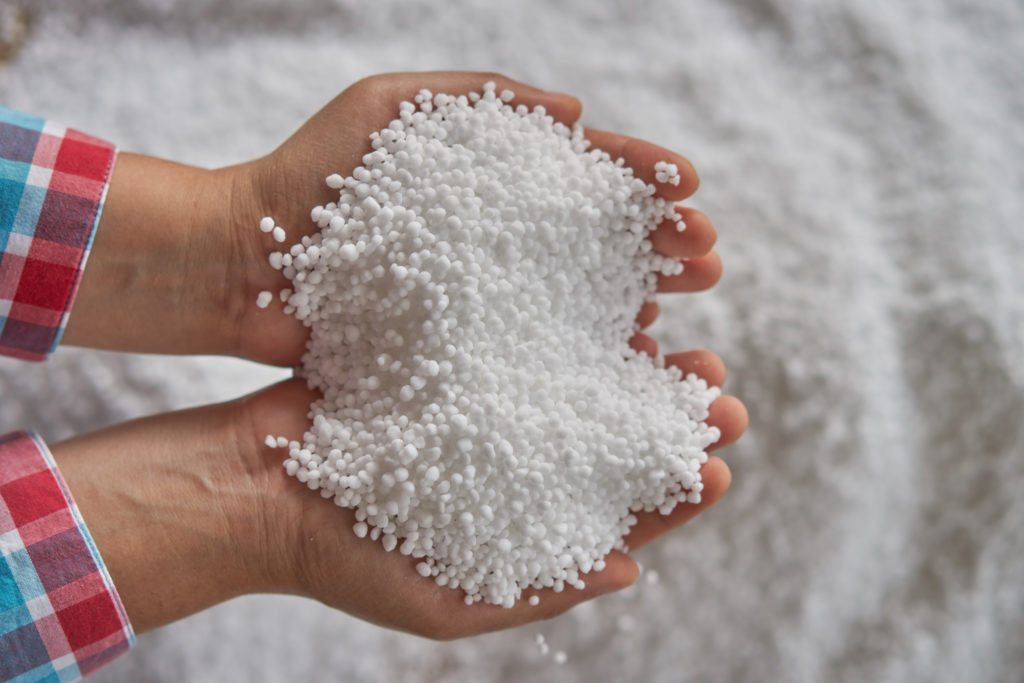
Remember to keep fertiliser and the machinery or produce stored in the shed separated to avoid fires and contamination. It would also pay to check that your insurance policy allows co-storing.
A storage shed also works well for storing shuttles of liquid fertiliser. Pallet racking is recommended in this instance to avoid double stacking of shuttles, reducing the risk of damaged shuttles, spills and contamination.
The shed should also have a concrete floor so that a high level of hygiene can be maintained and good ventilation through the shed is also a must-have.
If you are storing bulk amounts of liquid fertiliser though, a storage tank may be the better option.
3. What Is The Best Fertiliser Shed Design?
First and foremost, the best fertiliser shed design is the design that best suits your storage requirements.
The design should take into consideration the quantity of fertiliser being stored, the type of fertiliser being stored and your future storage requirements.
The best fertiliser shed design will also address the essential points:
- Safety
- Storage regulations
- Corrosion protection
- Access
- Ventilation
For example, ventilation is essential when it comes to fertiliser storage to reduce fumes and the risk of fire.
There are several ways you can ensure good ventilation in a fertiliser shed such as a ridge vent in the roof or ‘whirly birds’ in the roof.
Sliding doors for access can also help the airflow through the shed.
A fully enclosed shed with concrete panels is the recommended design for a fertiliser shed as it provides excellent weather protection and excellent corrosion protection and can be securely locked up to prevent unauthorised access.
The majority of fully enclosed fertiliser sheds we have built either have access from both gable ends or doors right along one side. This allows more than one type of fertiliser to be stored in the same shed, segregated by concrete panel dividing walls.
For more best-practice design suggestions, talk to one of our building consultants.
4. What Size Fertiliser Shed Do I Need?
There are a number of factors that will determine what size fertiliser shed you should build.
The most important one is obviously the amount of fertiliser being stored.
The type of fertiliser being stored should also be considered as the angle of repose and bulk density can vary between fertilisers. This will dictate details like the wall height and roof pitch.
It is also a good idea to factor in your future storage requirements and whether you will be using the shed for other storage purposes such as grain or machinery.
The smallest fertiliser shed size we build is an 18m x 12m x 6m fully enclosed shed which can store about 400 tonnes.
Other popular sizes include:
- 24m x 12m x 6m. Stores approx. 600 tonnes.
- 32m x 18m x 6m. Stores approx. 1,200 tonnes.
Typically, the bigger the shed the more cost-effective per tonne.
5. What Are The Advantages Of Concrete Panels?
Concrete panels are a must-have inclusion when building a fertiliser shed.
This is because concrete panels provide excellent corrosion protection in a highly corrosive environment, protecting the shed cladding and increasing the longevity of the shed.
There are other advantages of concrete panels too, including making loading and unloading the shed easier.
Concrete panels along with a concrete slab floor also make it easier to keep the shed clean and prevent contamination.
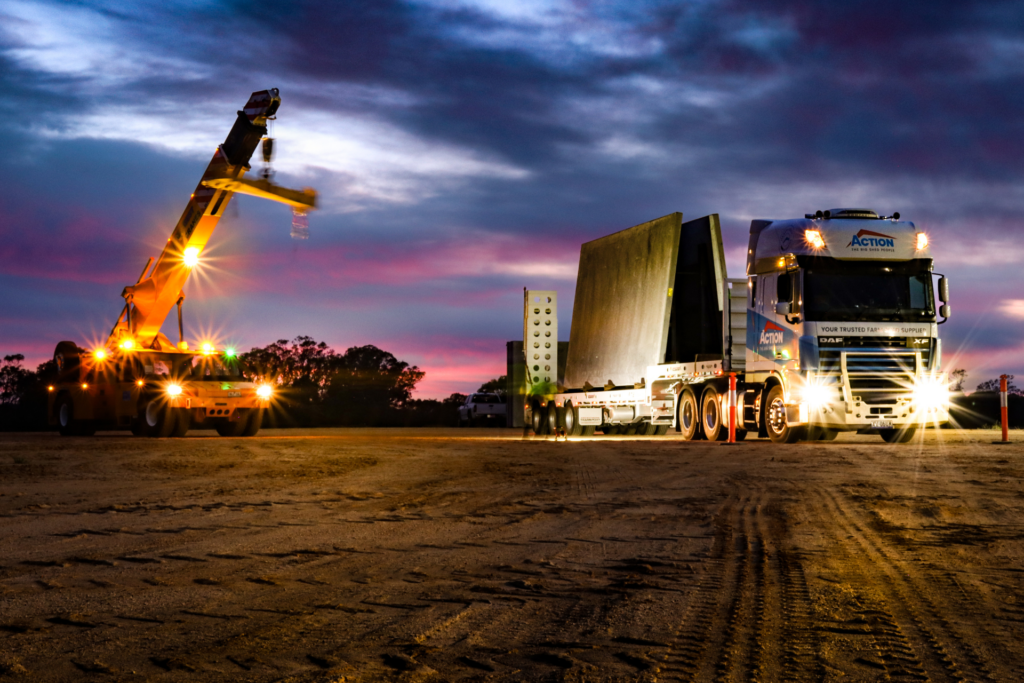
Additionally, because we manufacture concrete panels in-house, they can be a cost-effective addition to your shed build.
6. How Much Do Concrete Panels Cost?
We have established that concrete panels are essential for fertiliser sheds, but how much do they cost?
If you are working out the budget for your project, here is a guide on how much to allow for the concrete panels
The average cost of concrete panels is about $290 per square metre including GST and installation.
This does depend on the project though with concrete panels prices for fertiliser sheds ranging from $230 – $300 per square metre.
7. Can I Retrofit Concrete Panels To My Existing Shed?
Can you retrofit concrete panels?
If you already have existing shed infrastructure such as lockup workshop or machinery storage shed, this could be converted to fertiliser storage by retrofitting concrete panels.
There are various ways that you can retrofit concrete panels to your shed, depending on the size and type of panel you are hoping to install. The structure of your existing sheds will also need to be considered.
Retrofitted concrete panels do cost more compared to the panels in a purpose-built shed though.
This is because when retrofitting concrete panels to an existing shed, there is often additional steelwork required to accommodate the panel and fertiliser loadings.
Whereas in a new shed build, the structure of the shed frame is already designed and engineered to accommodate the loadings.
It is important to note that in both these instances, the concrete panels are designed and engineered to be tied in with a concrete slab.
While the panels may cost more, if you have the shed available, retrofitting panels may work out to be the more cost-effective and viable option for you – rather than investing in a complete new shed build.
Concrete panels can also be retrofitted for the segregation of different fertilisers.
8. How Much Do Concrete Slabs Cost?
After discussing concrete panel costs, you might also be wondering how much the concrete slab component of a fertiliser shed will cost.
The most common thickness for a farm shed slab is 150mm (6 inch), with one layer of reinforcing mesh. This is adequate for any farm machinery such as tractors.
However, if you are driving fully loaded semis or B-Doubles across the slab, 170mm to 200mm is recommended, and potentially another layer of reo mesh will be required.
As a guide, a 150mm thick slab will cost between $90 – $120m² (in rural areas).
9. What Are The Requirements For Fertiliser Storage?
It is important that whatever way you store your fertiliser, whether it is in a silo or a shed, it meets requirements and regulations.
It is a good idea to use the requirements for storing fertilisers to shape your fertiliser shed design.
This includes following the manufacturer’s instructions and the storage information on product labels when storing fertiliser.
In Victoria, there are a number of regulations to be aware of when it comes to storing dangerous goods such as fertilisers and chemicals, including:
- The Storage and Handling of Agricultural and Veterinary Chemicals (Australian Standard 2507-1998)
- The Dangerous Goods (Storage and Handling) Regulations 2022
You can find further information on fertiliser regulation from Agriculture Victoria, here.
10. What Is The Lead Time For A New Fertiliser Shed?
If you have a deadline in mind for your fertiliser storage shed project, then you might be wondering about time frames.
The current lead time for a new shed build is currently around four months. You can learn more about this here.
That’s a wrap on the top 10 questions about building a fertiliser shed! We hope this has been helpful.
For more articles like this or to access the latest shed brochures, browse the Learning Hub. Or for pricing information for your project, call us or REQUEST A QUOTE.

